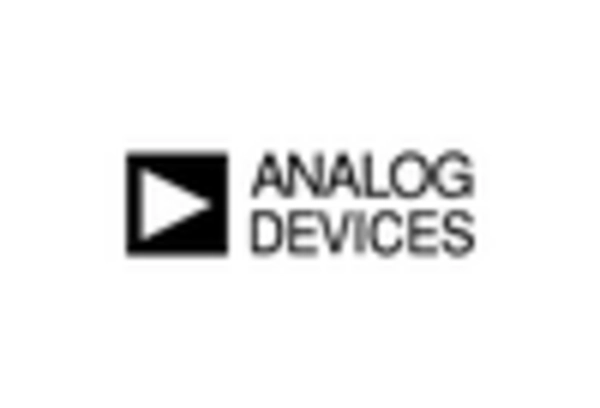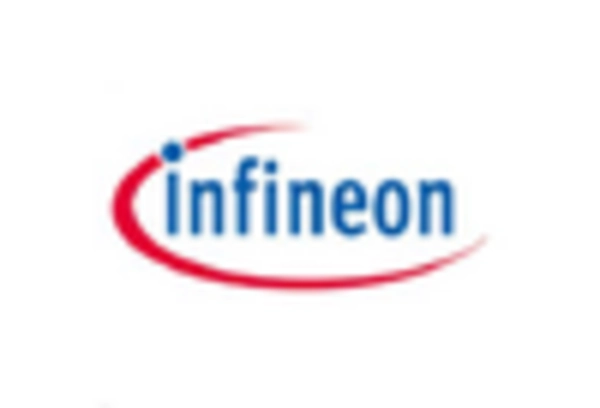Rising Focus on Vehicle Electrification
The Automotive Semiconductor Market is significantly impacted by the rising focus on vehicle electrification. As manufacturers transition from internal combustion engines to electric and hybrid vehicles, the demand for specialized semiconductors is expected to escalate. By 2025, the market for power semiconductors in automotive applications is projected to grow by over 15%, driven by the need for efficient energy conversion and management. This shift towards electrification not only enhances vehicle performance but also aligns with global sustainability goals. Consequently, the Automotive Semiconductor Market is poised for substantial growth as it adapts to the evolving landscape of vehicle electrification and the associated semiconductor requirements.
Growth of Electric Vehicle Infrastructure
The Automotive Semiconductor Market is significantly influenced by the expansion of electric vehicle (EV) infrastructure. As governments and private entities invest in charging stations and battery technology, the demand for semiconductors in EVs is expected to rise. By 2025, the EV market is anticipated to account for over 20% of total vehicle sales, necessitating advanced semiconductor solutions for battery management systems, power electronics, and electric drivetrains. This growth not only reflects a shift towards sustainable transportation but also underscores the critical role of semiconductors in enabling efficient energy management and performance optimization in electric vehicles, thereby propelling the Automotive Semiconductor Market forward.
Advancements in Automotive Safety Regulations
The Automotive Semiconductor Market is being shaped by advancements in automotive safety regulations. Governments worldwide are increasingly implementing stringent safety standards, compelling manufacturers to integrate advanced safety technologies into their vehicles. As of 2025, the market for safety-related semiconductors is expected to grow significantly, driven by the need for compliance with these regulations. Technologies such as collision avoidance systems, electronic stability control, and tire pressure monitoring systems rely heavily on semiconductor components. This regulatory landscape not only enhances consumer safety but also presents a substantial opportunity for the Automotive Semiconductor Market, as manufacturers invest in innovative semiconductor solutions to meet evolving safety requirements.
Integration of Internet of Things in Vehicles
The Automotive Semiconductor Market is witnessing a transformative shift with the integration of Internet of Things (IoT) technologies in vehicles. This integration facilitates enhanced connectivity, allowing vehicles to communicate with each other and with infrastructure. As of 2025, the market for connected vehicles is projected to exceed 50 billion USD, driven by consumer demand for smart features and real-time data analytics. Semiconductors play a pivotal role in enabling these IoT functionalities, including vehicle-to-everything (V2X) communication, remote diagnostics, and over-the-air updates. This trend suggests a burgeoning opportunity for the Automotive Semiconductor Market, as automakers increasingly adopt IoT solutions to improve user experience and operational efficiency.
Increasing Demand for Advanced Driver Assistance Systems
The Automotive Semiconductor Market is experiencing a notable surge in demand for Advanced Driver Assistance Systems (ADAS). These systems, which enhance vehicle safety and driving convenience, rely heavily on semiconductor technology. As of 2025, the market for ADAS is projected to reach approximately 30 billion USD, driven by consumer preferences for safety features and regulatory mandates. The integration of semiconductors in ADAS enables functionalities such as adaptive cruise control, lane-keeping assistance, and automatic emergency braking. This trend indicates a robust growth trajectory for the Automotive Semiconductor Market, as manufacturers increasingly prioritize the incorporation of these technologies into new vehicle models.














Leave a Comment